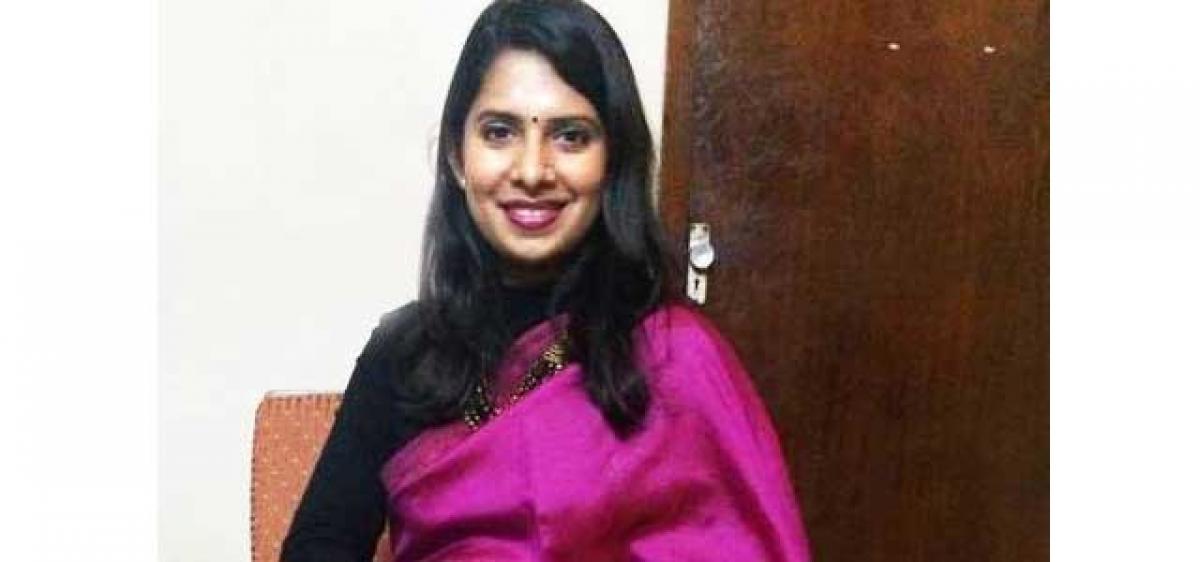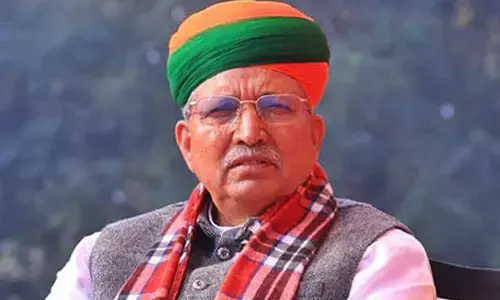An ancient art with bright future

Aishwarya Manivannan has left traditional Bharathanatyam dance to pursue an ancient art form of ‘Silambam’, which has been her discovery as an art, much higher than a self-defense mechanism that she demonstrated at the recently concluded Hyderabad Literary Festival 2017.
Aishwarya Manivannan has left traditional Bharathanatyam dance to pursue an ancient art form of ‘Silambam’, which has been her discovery as an art, much higher than a self-defense mechanism that she demonstrated at the recently concluded Hyderabad Literary Festival 2017.
How did you take to Silambam?
I used to learn Bharathanatyam from Kavitha Ramu and she spoke to me on how traditional martial arts can help improve the performance quality of Bharathanatyam dancers. I was then told about Power Pandian Aasan (my Silambam guru).Once I went to the classes to have a look at the sessions and it immediately triggered my interest.
When I started Silambam I had no idea about the art form. I did not start learning it as a form of self-defense. To me it was a beautiful traditional art form with its roots originating in my own ancestry thousands of years ago and this is what pulled me towards the regular practice of Silambam. After a few months I began to understand and realise the intricacies and depth that Silambam had and I felt that I won’t be able to do justice to both Silambam and Bharathanatyam.
This is when I decided to choose Silambam and concentrate on it rather than juggle between both. I felt that there were a lot of unexplored possibilities in Silambam and after having experienced its beauty, it almost felt like I had a responsibility to make more people aware of this great art form.
As a woman, how easy or difficult was it to learn the art form?
Silambam from its early days has been practiced by both men and women. Similarly, there are a lot of women Silambam practitioners even in the present day scenario. Even though the proportion of men is more than women, there is no discrimination based on gender in the practice or approach to training. I don't believe in gender-based approaches to conversations, action or outlook.
My master does not discriminate between men and women in our training as well. We train just as hard as the men and sometimes even more so. The learning of Silambam does not differ between men and women. As individuals we need to set our goals and strive to better our performance, and for this it is regular practice that is the key irrespective of gender.
Who is your inspiration in life?
I have been lucky and blessed to know and work with some very inspiring women throughout my life so far, who have all been instrumental in shaping my ideas and being a role model in many ways. However, I have a genuine curiosity and respect for people from different backgrounds and this leads me to find inspiration in very mundane and unique situations and experiences. Both my grandmothers (paternal and maternal) were very strong women, were successful leaders in their professional careers and also managed an active family and social life along with dedicated social work and pursuing hobbies.
I have grown up seeing my grandmothers and mother lead successful and fulfilling lives with grace and élan. Adding to this, my Bharathanatyam guru Kavitha Ramu, who is an IAS officer and Bharathanatyam exponent, my college professor Thejo Menon, who is an established artist/educator and Krithika Subrahmanian, senior architect and Bharathanatyam dancer have all played a part in being inspirational and constant role models for me to strive to achieve heights in more than one realm. I think inspiration is everywhere. It just depends on how well we see and observe our surroundings in a sensitive and compassionate manner.
Does younger generation find time to learn this art form?
There are kids from the age of five years old, who come to learn Silambam from my master. It is great to see younger kids take up Silambam from an early age because I believe that it is a wonderful physical activity that brings about improvement in concentration, fitness, strength, confidence and a multitude of other important factors. When children learn Silambam from an early age, they will be able to participate in school, district, national and international tournaments.
How does this form help in life and concentration?
Being a full body activity, Silambam also takes care of various aspects of fitness such as stamina, strength, agility, flexibility, foot work, balance, rhythm, cardio, core strengthening, etc. It is a very effective physical activity that men and women can practice across age groups. Children will see a marked increase in their motor skills, hand-eye coordination, focus, creativity and concentration.
Is this art form close to any other forms across the world?
Silambam being one of the oldest martial art forms in the world is said to be the inspiration or root to many other Asian martial art forms. There are some similarities between Silambam and Kalari from Kerala primarily because both come from Dravidian roots. But Silambam is said to be older than Kalari with the sage Agasthiya Munivar documenting the techniques of staff wielding in the Kambu Sutram through palm leaf manuscripts.
Bodhidharma is said to have then taken the techniques of Silambam to the other countries he traveled to. Most weapon based martial art forms in the world have the stick or a Bō staff as one of the most revered weapons. It is practiced using different names all across the world - Jogo do Pau in Portugal, Kali in Philippines and even Karate and Kung Fu has staff fighting techniques. However, some weapons such as Maan Kombu (deer horn), Surul Vaal (metal whip) and Chedi Kutchi (short stick pair) are exclusive to Silambam.
Is this form recognised by Government in terms of providing programmes, scholarships to learners and funds for teachers?
Silambam is a registered school game by the Tamil Nadu Government and there are Federations such as All India Silambam Federation and World Silambam Federation that conducts tournaments in the school, district, national and international levels. However, these federations in spite of being recognised by several foreign sporting bodies are not funded by the Union government and the participants are also not given any funding or support to participate in various tournaments. This is a challenge we wish to overcome as many deserving practitioners are unable to participate due to lack of funds.
What are your future plans?
As an art form, I wish to explore Silambam in more unconventional ways by collaborating with other visual and performing art forms. We are also supporting the Federations to make Silambam a registered sport by the Indian Sports Ministry and take it to the Asian Games and Olympics in the future. I am planning to publish a book on the history, journey and beauty of Silambam.










